Dennis Loren | Interview | Counterculture Poster Designer & Musician
Dennis Loren has been creating concert posters and album covers and music-related graphics for over five decades now. Some of the early work includes concert posters for Muddy Waters, The Youngbloods, and Jimi Hendrix Experience.
Loren originally began around 1967, designing posters for the legendary venues such as The Matrix, The Fillmore, The Avalon Ballroom, The Great American Music Hall, The Warfield, and The Whisky A Go-Go among countless others.
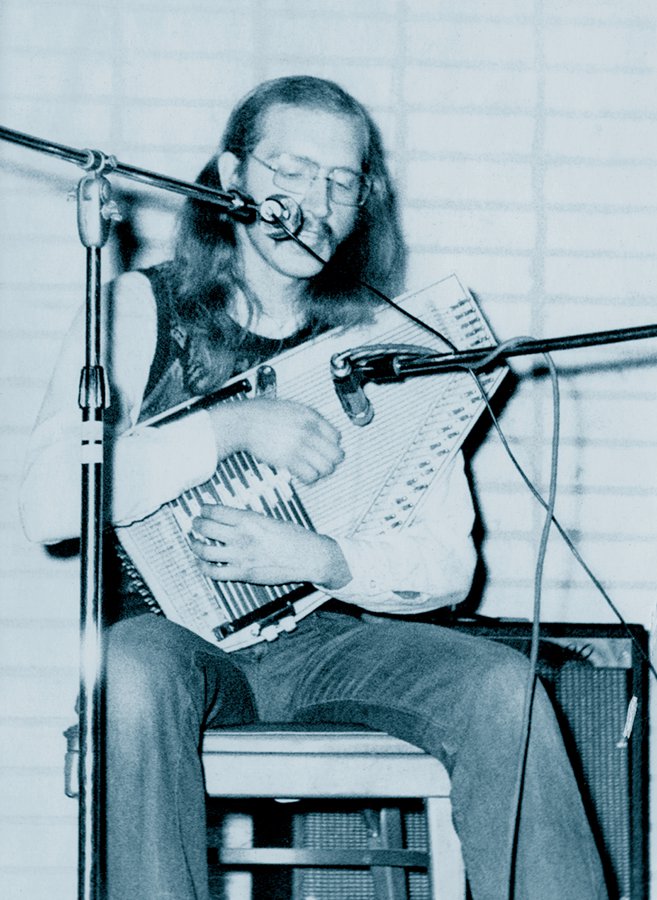
“I am kind of a chameleon and can easily slide between design styles”
Would you like to talk a bit about your background?
Dennis Loren: First I should say that my full name is Dennis Loren Kranich. Kranich is a German family name that means Crane in English, like the bird. My family pronounced it as “Chronic,” but with the spelling of “Kranich” it was always mispronounced. When I used to play music and open for my friend Ted Lucas in Detroit and Ann Arbor area coffee houses, he suggested that I used my first and middle name, because the announcer would always mispronounce my last name. Loren is my father’s first name.
My paternal great grandfather Ferdinand Kranich was born in Warsaw, Poland. His parents were Germans working in Warsaw. When he was eleven years old, both of his parents died during a flu pandemic. We believe his parents may have been Jewish, but he was adopted by a Polish family and raised religiously as a Protestant. His adopted father taught him to hand carve decorative furniture and wooden fixtures for homes in wood. To avoid conscription into the military, young Ferdinand came to America in the 1880s. He landed in Baltimore, but soon traveled to Detroit, because there was a large German and Polish speaking population located there. Ironically, he could speak five European languages, but no English. He would eventually learn to speak enough English to communicate with other English speakers. He first found work as a carpenter, but soon found work with his special trade of decorative wood carving for fixtures in the homes of wealthy Detroit businessmen.

My paternal grandmother Amanda Shultz’s family were German farmers that immigrated to the farming community of Gladwin, Michigan in the early 1800s. My paternal grandfather Benjamin Kranich and the oldest son of Ferdinand was born in Detroit. He graduated from Wayne State University and became a school teacher. His first teaching job was at a rural one room school in Gladwin, where he taught all ages and grades. My grandmother Amanda was one of his high school students. When she graduated, Benjamin asked her family for her hand in marriage. My father Loren Wesley Kranich was born in Gladwin, Michigan in 1919.
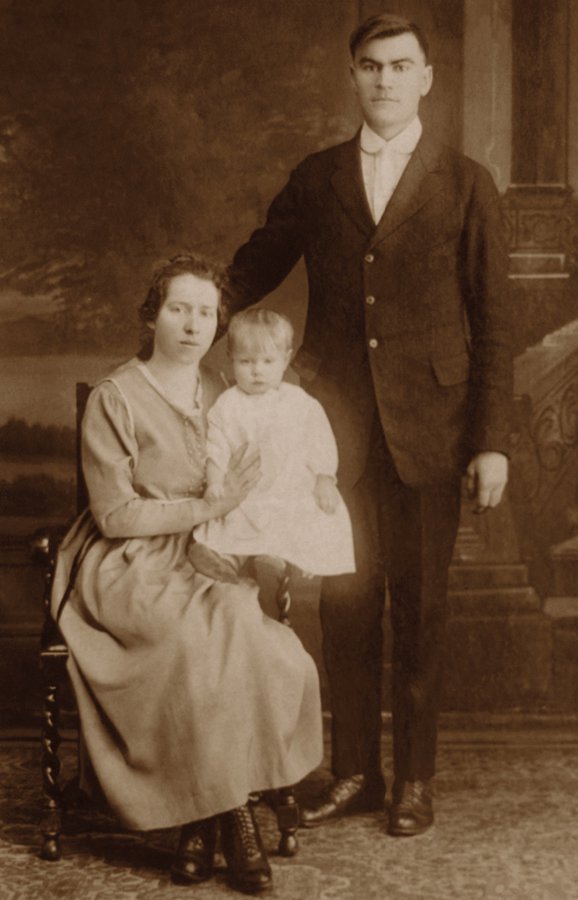
My maternal side of the family is a mix of Irish, Scottish, Welsh and Native American. My grandmother Eula Hargis Neely’s ancestors came to this continent before the United States of America was established. Two Scottish/Welsh brothers – James and Edward Hargis – came to Jamestown, Virginia in 1610 on a supply ship named “Patience”. John Rolfe – who eventually married Pocahontas – was the captain of the ship. Like Captain Rolfe, both Hargis brothers would marry Native American women. Over time the descendants of the Hargis brothers would settle in the state of Tennessee.

My maternal grandfather – Cellus Raymond Neely (later spelled Nealy) – was born in the farming community of Flat Lick, Kentucky. His ancestors had come from Ireland. He liked his middle name better than his first name and everyone called him Ray Neely. My grandmother Eula’s father – who I called “Pappy Hargis” – owned a large farm near McEwen, Tennessee that mostly grew tobacco. He had three children, Eula, Frank and Ruth.

When Pappy retired he moved into a large house in McEwen and lived with his daughter Ruth’s family. Frank ran the farm. When my grandfather Ray Neely married Eula, Pappy gave part of the farm land to the young couple as a wedding present. My uncle Frank continued growing tobacco, but Ray and Eula began growing corn and other vegetables and fruit, as well as raising beef cattle and pigs. They also had horses. Ray loved horses and trained them as show horses.

After graduating from high school, my mother Dorothy moved to Detroit, where she eventually met and married my father Loren. I was born on June 15th, 1946 in a hospital on Trumbull Avenue near the original Detroit Tigers baseball stadium. My parents and I lived in the upper flat of my great grandfather Ferdinand’s home, located on Detroit’s Eastside near Gratiot Avenue and Six Mile Road. Sadly, my mother Dorothy died of Hodgkin’s Disease in 1950 when my brother David was only three months old. She was only twenty five. My dad, baby David and I then moved to my paternal grandparent’s home in the Springwells section of Detroit on the Westside of the city.
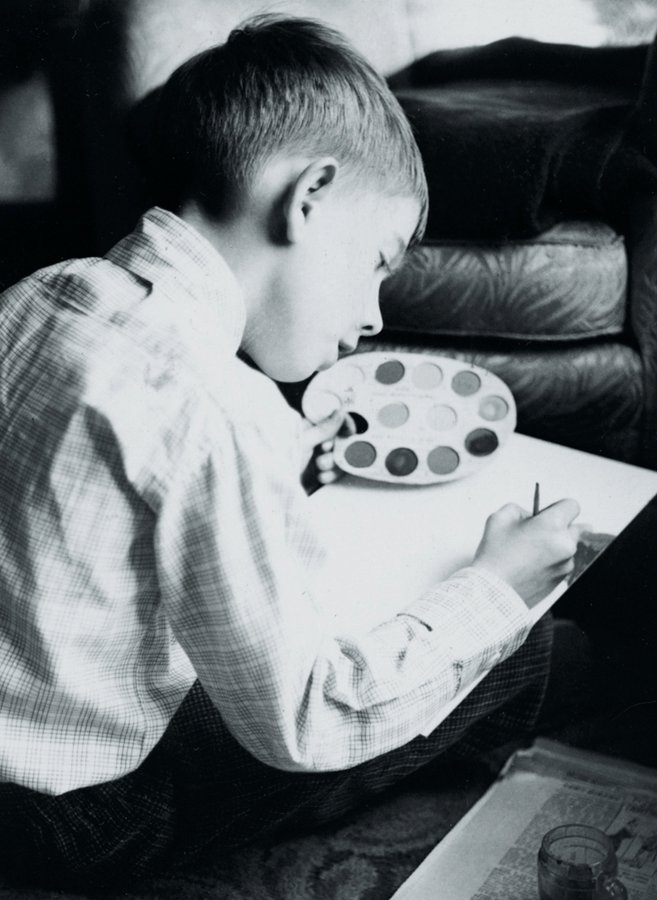
Later, my father would remarry and we moved to a home in Dearborn, Michigan. My step-mother Harriett was a school teacher. My half-brother James was born in 1960. I am actually fourteen years older than James – ha!!! My father worked in the testing laboratories of the Uni-Royal Tire Company. During my Junior High School and High School days, my brother David and I played in several local rock bands. I graduated from Edsel Ford High School in 1964. During the day, I worked in a department store and attended evening classes at the Society of Arts & Crafts (now known as the Center for Creative Studies) art school located near the Detroit Institute of Arts museum and Wayne State University. I was drafted into the US Army in September of 1965.
During my time in the Army, I was stationed in Fort Leonard Wood, Missouri (for basic training) Fort Devens, Massachusetts (code school), Diogenes Station in Sinop, Turkey (a signal intelligence unit monitoring the Soviet Union) and the Presidio of San Francisco (a 6th Army intelligence unit) until my discharge. I remained in San Francisco for the next three and a half years (from February 1967 to July of 1970). I married a student nurse named Elsie Vollmer and our son Benjamin was born on October 14th, 1968. I was in a band called Mercury Vapor and started doing my first concert posters while working first at a company called Graphic Reproduction and later the US Post Office as a letter carrier.
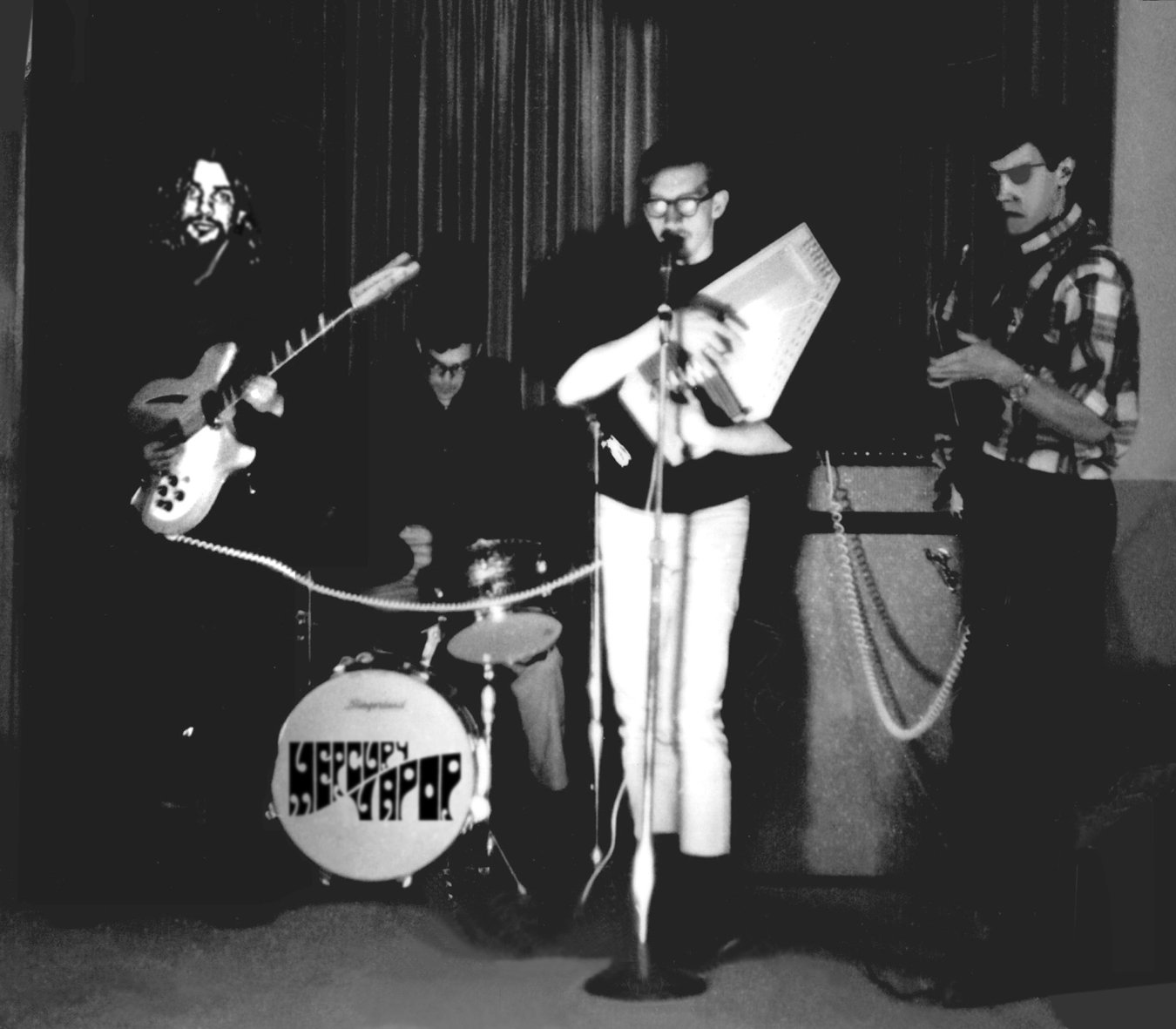
How was growing up in Detroit?
I loved growing up in Detroit. I know that in more recent years, Detroit has seen financial and other related troubles, but it was once known as “The Paris of the Midwest”. In fact, Detroit was established by the French in 1701, long before it became an American city. Detroit means “On the Straight” or “River”. Many of the street names are French, such as Lafayette, Chene and Gratiot. It was a center for fur trapping and trading with the Native American people living here. Later it would become a center of industry. The lumber and mining of metal ore in Michigan, led directly to Detroit being a center of first making stoves and later the automobiles. Because of Michigan’s abundance of natural resources and unique waterways, Detroit became a center of industry.
That said, Detroit was very much a cultural city, as well because it was also a melting pot of ethnic diversity and those ethnic groups contributed to local culture. For example, blues musicians, like John Lee Hooker, migrated from the South to get jobs in Detroit’s car factories. All kinds of ethnic food was available. When I was young, people flocked to “Old World Market” during the holidays to get Christmas presents and other treats from countries around the World. I remember when my father bought me a puppet from somewhere in Europe as a gift. That puppet became a prized toy in my childhood.
When I was a teenager, I became very interested in folk and blues music and attended my coffeehouses with names like the Raven Gallery, the Cup of Socrates, The Soup Kitchen, the Living End and The Chess Mate. There were teen rock clubs, such as the Hideout and the Mump. Henry Ford’s son Edsel contributed lots of art to the Detroit Institute of Arts collections and hired famed Mexican artist Diego Rivera to paint giant murals in the front lobby of the museum. The Fagenson family that owned the Faygo soda pop company were also patrons of music and art. If a person was a sports fan, we had the Detroit Lions football team, the Detroit Red Wings hockey team, the Detroit Pistons and Detroit Tigers baseball team. There were also grand theaters, ballrooms and nightclubs.
Some of the heaviest groups came from your city reflecting the tension of the social injustice that was happening. Would you like to reflect back what it was like back then?
As rock & roll became popular, most teenagers my age were huge music fans. We all listened to the many of the popular radio stations located in Detroit and across the Detroit River in Windsor, Canada. We also had local record labels, such as Motown, Westbound, Fascination, JBL and Golden Voice. When we were growing up in the late ‘50s and early ‘60s, the Civil Rights Movement was at its height. My father took me to hear Martin Luther King Jr. speak at a rally in downtown Detroit. In high school my teachers also made my fellow students and I aware of segregation and the Civil Rights Movement. Also remember that most teenagers then had fathers and sometimes even mothers that worked in Detroit factories. Most of these jobs were repetitive, noisy and dirty. I know that my father – who as a kind and tolerant person – never wanted his three sons to work in a factory. The Vietnam War was also looming on the horizon. The military draft would take high school graduates – who didn’t go to college – into the Army, Navy, Marines or Air Force.
With all the above and some ethnic problems in certain neighborhoods, lots of frustration and tension built up. Detroit area rock bands, such as the MC5, The Amboy Dukes, The Stooges and a host of others reflected that frustration and tension with a heavy and aggressive sound. From Grand Funk Railroad to Bob Seger and his groups, The System and Silver Bullet Band. We had many popular local rock bands – that didn’t reach international fame – whose group names reflected this tension and frustration, such as The Spike-Drivers, The Southbound Freeway, The Frost, The Rationals, The Jagged Edge, Dutch Elm (named for a tree disease), The Fugitives, The Underdogs, The Scott Richard Case (SRC), The Wilson Mower Pursuit, The Stuart Avery Assemblage (later shortened to just The Assemblage), The John Drake Shakedown, The Pink Peach Mob, The Corporation, Mighty Quick, The Charging Rhinoceros of Soul, Third Power, Nickel Plate Express, Popcorn Blizzard, The Unrelated Segments, All The Lonely People and others. And this tradition of heavy music would go into the future with The Motor City Mutants and The Gories, to name just two.
When did you first get interested in music and art? Was there a certain moment when you knew you wanted to be part of counterculture and around yourself with work?
Since I was very young. I studied my father’s record collection’s album covers, books, magazines, newspaper comic strips and regular comic books. I wrote letters to artists and graphic designers asking about their various techniques and surprisingly many wrote back to me, because of my enthusiasm– ha!!! My father loves music and photography. Dad’s youngest brother Irving took vocal and piano lessons and would eventually become a professor of music at two Universities in Seattle and Chicago. Irving led many choirs and vocal groups. There is a photo of me painting that my father took when I was eight years old. Another photograph shows me entertaining my brother David with a large Circus coloring book. My great grandfather Ferdinand hand carved decorative designs in wood and my grandmother Amanda made clothes and weaved decorative designs in cloth. My uncle Clifford was a tremendous pencil artist and drew all kinds of cars, trucks and airplanes freehand. So, I grew up surrounded by art and music
I must also mention my Junior High School art teacher, Mr. Hashonian, who tutored me twice a week after school in drawing. In High School, I took elective courses in photography and print shops. My print shop teacher Mr. Stolfo was the first person to teach me not only printing, but graphic design. My fellow print shop students and I designed and printed our weekly High School newspaper. So, I had a grounding in photography, printing and graphic design, before I ever went to art school – ha!!!

Together with your brother David you played in several rock bands. The information is scarce, so please tell us what were those bands and did you record any 7-inch?
In the early ‘60s, I became very interested in the folk and blues revival that was happening then. My high school girlfriend Kay Jackson (who was also an exceptional artist) and I would go to local coffeehouses and see performances by John Lee Hooker, Phil Ochs, Bobo Jenkins, Gordon Lightfoot, Dr. Ross (who wrote the song ‘Cat Squirrel’ that was covered by Cream), Chuck & Joni Mitchell, Son House (who was a custodian at Wayne State University) and other folk and blues acts. We often took our sketchbooks and drew portraits of the performers.
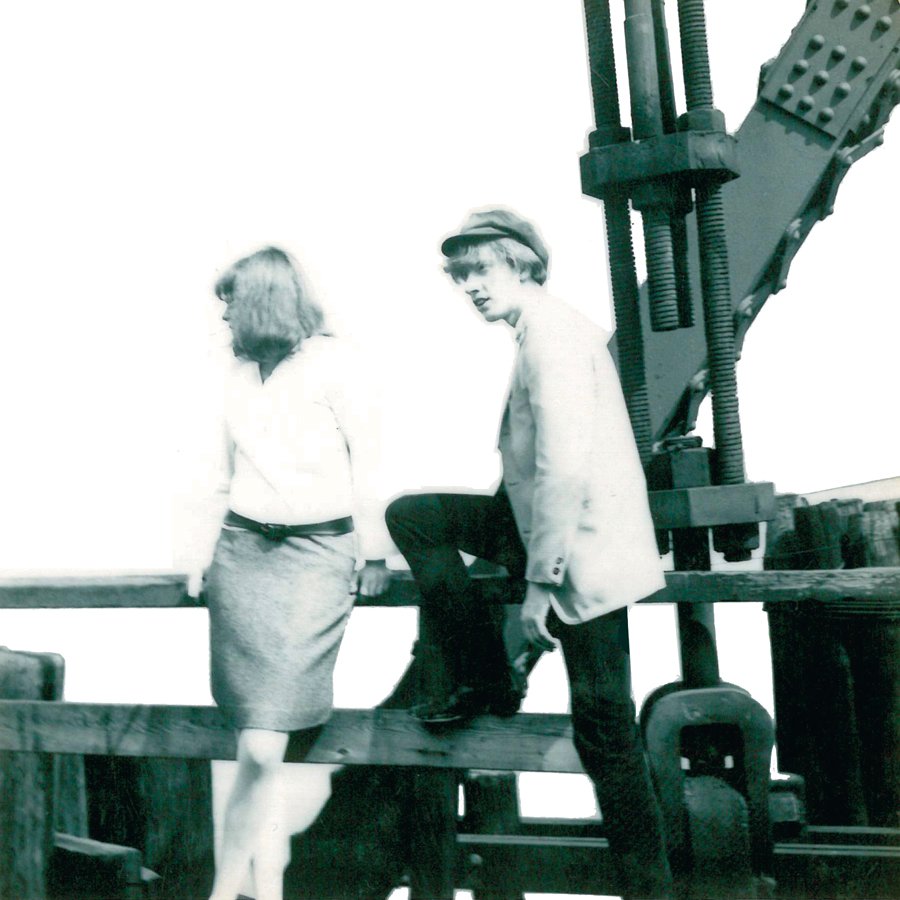

In Junior High School, I was in an instrumental rock band called The Dell-Tones (named for our saxophone player Jim Dellmore. I played the flute and bass guitar in The Dell-Tones, my neighbor Bill Rinn played lead guitar. The Dell-Tones were heavily influenced by The Ventures. I also began playing the harmonica and autoharp. When the British Invasion happened in 1964 my brother from a group with Dave Halstead and drummer Doug Lebeck called The Monacos, When Lari Jackson (Kay Jackson’s brother) joined in on bass guitar, the name of the group was changed to the House Of Lords. The band asked me to join as lead singer and harmonica player. Our sound is influenced by The Byrds, The Lovin’ Spoonful, The Zombies, The Animals, The Yardbirds, The Pretty Things and of course The Beatles and The Rolling Stones. I thought we needed a better name and suggested The Vampires.

My brother David played lead guitar and sang harmony vocals. David and I both started writing songs. David and I also moonlighted with another Dearborn group called The Heartbeats, featuring John Angelos, Marc Falconberry and Keith Johnstone. At this time David began spending long summers on our Neely grandparent’s farm and grandpa Ray began teaching him to seriously ride and train show horses. He loved music, but loved the horses more – ha!!! Dave Halstead moved to lead guitar and Tom Lewis came in on rhythm guitar and background vocals. I also began performing as a solo singer-songwriter using the harmonica, autoharp, guitar and dulcimer. When I was drafted in September of 1965, Doug Lebeck’s cousin replaced me on lead vocals and harmonica and they changed the name of the band to Youngblood Hawks. With a revised line-up and another name change to Blackstone Row, Dave Halstead would eventually play the Grande Ballroom.

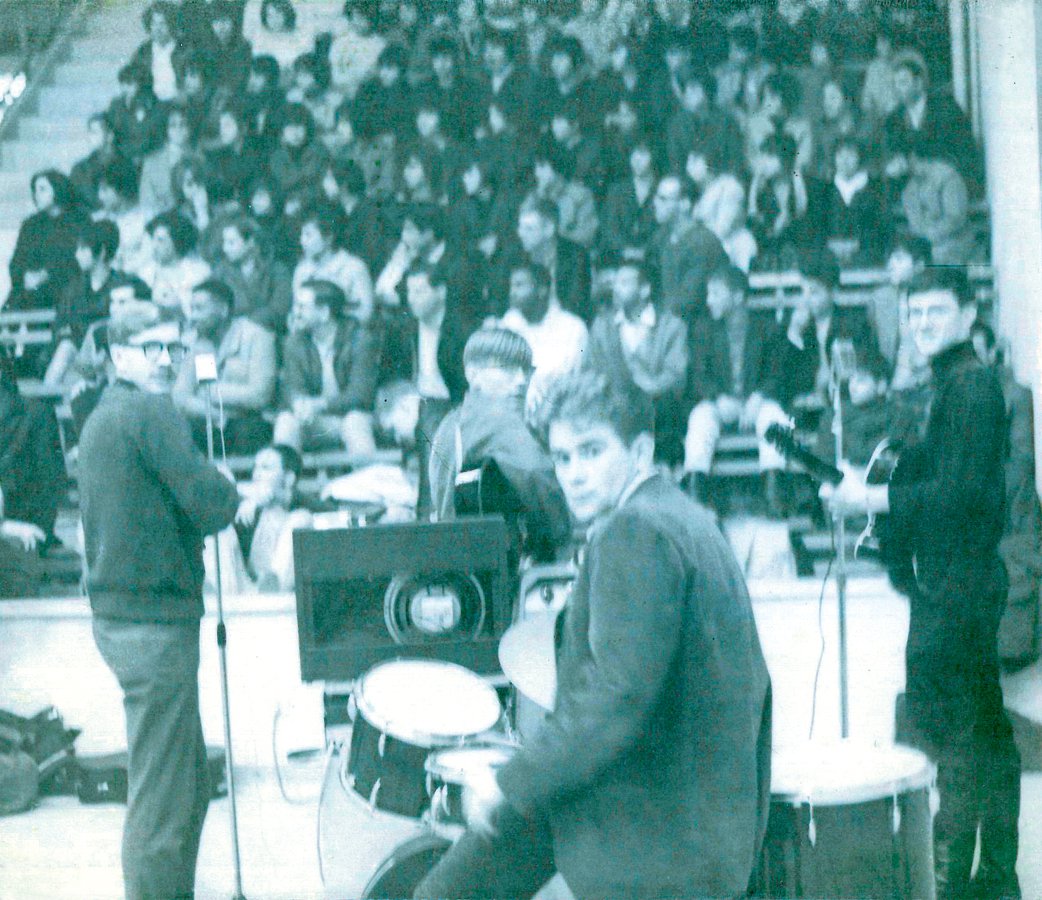
Bill White – another friend and neighbor was the original bass player for The Amboy Dukes. He played on the first Amboy Dukes album, but was soon drafted and went to Vietnam. When Bill returned home, he rejoined The Amboy Dukes. At that point the group featured John Angelos on lead vocals and Keith Johnstone on drums. At this time The Amboy Dukes were between record deals, so I am not sure if this line-up ever recorded. When Nugent fired Keith Johnstone for smoking pot, Bill White left too. Bill and Keith formed a power trio with Marc Falconberry on lead guitar called Magic Rape.

Before Bill White returned from Vietnam, John Angelos, Marc Falconberry and Keith Johnstone were in the Pink Peach Mob and Mighty Quick (with bass player Michal Jones). Marc was also a member of Dutch Elm at some point. John Angelos went to Los Angeles and joined former Taj Mahal guitarist Jesse Lee Davis for the ‘Keep Me Comin” album. Marc and Keith would form a new power trio with Greg Denning on bass, called Flack. They opened for the Steve Miller Band and Trapeze at Ford Auditorium.
In the early ‘70s, Marc Falconberry, Keith Johnstone, Greg Denning and I recorded a single featuring a song that Marc and I wrote called ‘Don’cha Touch Our Rock & Roll’ backed with Marc’s song ‘On My Mind’. I used a photo taken by Kay Jackson of Doug Lebeck, Dave Halstead on the front of the picture sleeve and I collaged photos of Marc, Keith, Greg and I on the back of the sleeve. Greg plays under the assumed name of Rich Coffee – ha!!! Some copies of that single made their way to England, where it has become a collector’s item. Marc went on to become a noted blues artist, both in Southern California and back here in Michigan. He lives in Ann Arbor, Michigan and I ironically just spoke with him yesterday – ha!!! Marc and I and another former Dearborn musician Neil Woodward, plan to record my late brother David’s song ‘Just Maybe I’m Sad’ in the near future. I still remember all of the lyrics – ha!!!
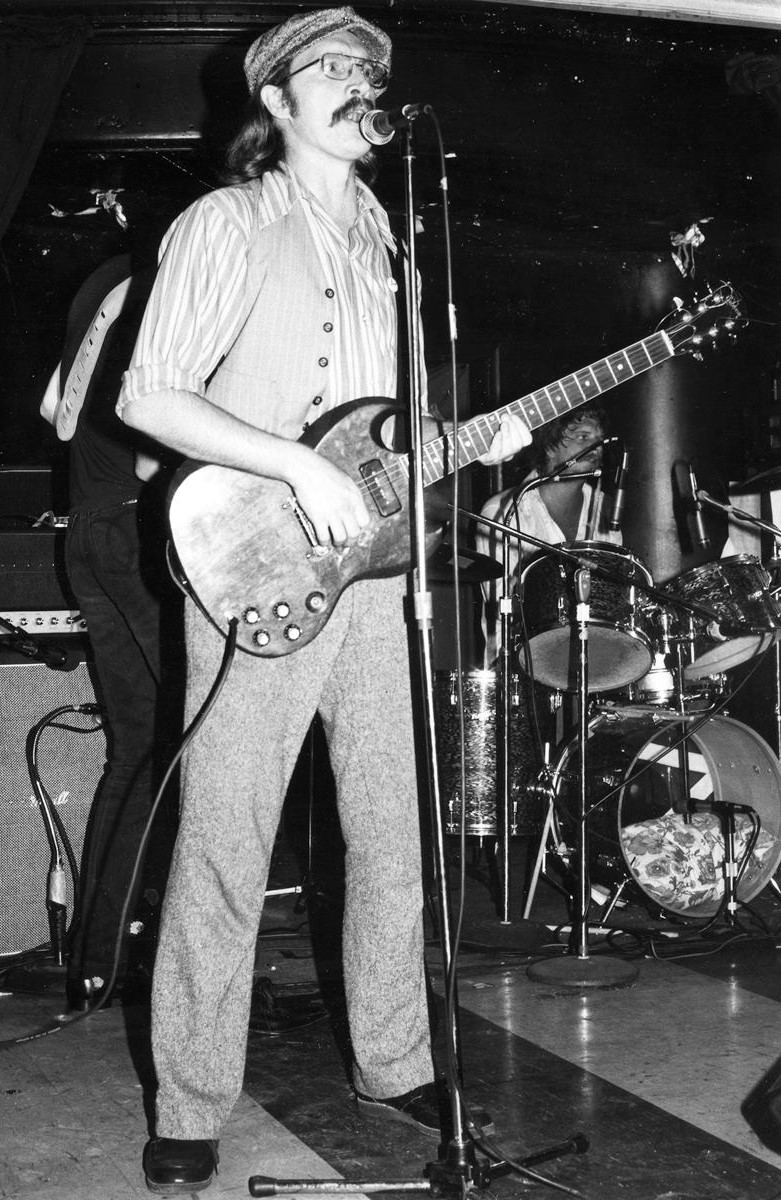
“Most of my drawings start with a pencil that I ink with a pen”
You finished Dearborn’s Edsel Ford High School in 1964 and continued with art classes at the Center for Creative Studies (then known as the Society of Arts & Crafts). Tell us how much that influenced (if any) your style?
Actually, I learned more about graphic design and printing in High School, but going to art school did help improve my drawing skills. As my fellow students and I drew portraits of the models in charcoal, my instructor used to wander around the class room checking everyone’s progress. Once when he watched me, he noticed that I drew with both hands. This made him ask to draw a picture of President Abraham Lincoln with one hand and then the other. He remarked that I had two different drawing styles. I was always ambidextrous, but my grandfather Kranich encouraged me to write with my left hand. Everything I have ever learned has evolved over the years and been used in my music related graphic designs for concert posters, LP and CD packaging, magazine advertising, logos and tour merchandise. Ironically, I am kind of a chameleon and can easily slide between design styles. I love Art Nouveau, Art Deco and Psychedelic styles.
Most of my drawings start with a pencil that I ink with a pen. These days with the computer, I scan these pen and ink drawings and turn them into vector outlines in Adobe Illustrator. I use Adobe Illustrator software and my main design tool. If I have to use a band photograph, I place an Adobe Photoshop EPS into the design. When a design is approved by the client, I bring the design into Adobe Photoshop, flatten it and make either a Tiff or PDF, depending what the client’s printer wants. Overall, I think my strongest technique is my use of color. When coloring a design, I try different color combinations until I find the combination that I like best. I occasionally still hand-letter some band names, but when I do use fonts, I will turn them to vector outlines and customize the lettering.
Then you got drafted and sent overseas to Turkey? What was that like for you? Did you have any chance to explore their culture and music?
I actually enjoyed my time in Turkey and every time I got a pass, I would go down to the little town of Sinop and enjoy myself soaking up local color and culture. I met craftsmen and musicians. I even purchased a Caz – kind of a cross between a banjo and guitar – kind of gourd shaped with very lite strings. I never learned to play it very well, but it was interesting to use it from time to time, in my music. We also saw a number of bands from England that would play on the base for the soldiers. One of which was called a Bunch Of Five, who later recorded as Tickle. Lead guitarist Mick Wayne would later play in a band called Juniors Eyes that made a couple of albums for A&M Records.
In my spare time, I also was in a band called “Part Two”. With guitarists Tom Sellew, Mike Kuric and drummer Bill Banta. We once played at a local Sinop High School. We opened for a basketball game between the High School team and our base all-star team. Another time we played with a local Turkish rock band at the Yeni Hotel in Sinop. They were influenced by the Beatles, but used elements of Turkish folk music and instrumentation that sounded very psychedelic to me – ha!!! Wish I could remember the group’s name, because they were very good. We also performed many times with the base country band called the Gunrunners – ha!!!

Both Mike Kuric and I had boots that were hand made by a local Sinop craftsman. Eventually we took a trip – while we were on leave – with another soldier friend. Our goal was to reach London. We used every means of transportation to get there – ha!!! We took a bus from Sinop to Istanbul, an army mail and supply plane to Naples, Italy. From Naples, we took a train through Switzerland, Austria to Frankfurt, Germany. From Frankfort, we flew on another military supply plane to London. We took another train to Birmingham, England and hitched a ride in a truck to the home of a family that our friend knew. We got around London using the underground subway system and walking. On the return trip we flew another military supply plane. The plane stopped in both Madrid, Spain and Athens, Greece, before taking us to Ankara, Turkey. From Ankara, we hitched another ride in an Army supply truck to Sinop. Somehow we did this all in under a month’s time – ha!!! We did see bands in Munich, Germany and both Birmingham and London, England. We also visited Portobello Road and Carnaby Street.
“When I was sent to the Presidio of San Francisco, I thought I had died and gone to heaven, because I was completely in love with the local music and art scene”

Then came probably the most exciting time spent in San Francisco. For a moment everybody thought you’re changing the world. How did you see the counterculture before the sad ending in the late 60s?
When I was sent to the Presidio of San Francisco, I thought I had died and gone to heaven, because I was completely in love with the local music and art scene. There were many Detroit expatriates living in SF and part of the scene, including Jim Gurley (who was lead guitarist with Big Brother & The Holding Company), poster artist Stanley Mouse (who I first met at the Detroit State Fair when he was sixteen and I was eleven, when he was still airbrushing hot rod monster t-shirts), Ellen Harmon and Jack Tollie who were part of the Family Dog that organized concerts at California Hall, the Fillmore (trading weekends with Bill Graham until he took over that venue) and the Avalon Ballroom, as well as former Southbound Freeway member Larry Miller. Larry got a job as a DJ at the FM radio station KMPX. He revolutionized local San Francisco radio with his underground free form format. The first time I heard his radio show, he played ‘Down On Me’ by Janis Joplin and Big Brother, followed by a raga by Ravi Shankar, album tracks by The Beatles, The Youngbloods and Jefferson Airplane, along with The Spike-Divers Reprise Records single ‘Baby Won’t You Tell Me How I Lost My Mind’. Larry was friends with The Spike-Drivers in Detroit.
The first musician I met was Jim Gurley, when I delivered a package from our mutual friend Ted Lucas (who was lead guitarist Spike-Drivers). Soon after this I met Skip Spence, Peter Lewis and Jerry Miller of Moby Grape, George Hunter and Mike Wilhelm of the Charlatans and John Cippolina of Quicksilver Messenger Service. Jesse Colin Young of The Youngbloods, Chet Helms of the Family Dog and light show pioneer Bill Ham. The Matrix was the first venue I discovered. I first saw The Doors, The Sons Of Champlin, The Sopwith Camel, The Youngbloods and The Santana Blues Band at the Matrix. Eventually, I fell into a pattern of attending concert venues on a weekly basis. On Thursday evening I go to the Matrix, on Friday evening the Avalon Ballroom and on Saturday evening the Fillmore Auditorium. On Sunday there would be free concerts in Golden Gate Park and other locations around the city. One Sunday afternoon, I was driving to the City Lights bookstore in North Beach. As I passed a local park I heard music and decided to stop. The bands that played that afternoon were Mother Earth and Mad River. That day, I became friends with Powell St. John.

My first two posters were for a Youngbloods concert at the Matrix and a Jimi Hendrix Experience free concert in the Panhandle of Golden Gate Park. I had told my girlfriend about the scene in San Francisco. Kay got me a job during this time to make a poster for the Muddy Waters Blues Band concert in Detroit at the Living End. I mailed her the art work and she had it printed in Detroit. She was going to join me in SF the following September after my discharge, but she was sadly killed in an automobile accident in August. I was devastated and to console myself I formed a band called Mercury Vapor with two fellow soldiers, guitarist David Green and drummer Rich Butler and two local SF musicians, guitarist Joe Torchy and bass player Bobby Scadari. We played on weekends at the Presidio Service Club, the Matrix and at venues in Stinson Beach and Sausalito in Marin County.
I met my future wife Elsie at one of these gigs. After David Green was sent to Japan and Rich Butler to Germany, they replaced Rich with drummer Jim Reynolds. When Bobby moved to Southern California, he was replaced by bass player Marty DeClerk. We rehearsed in It’s A Beautiful Days’ basement. When this line-up broke up, Joe Toschi and I formed an acoustic duo and performed in North Beach coffee houses like the Coffee Gallery and Coffee & Confusion. One evening when we performed at the Coffee Gallery, Grace Slick was in the audience. She didn’t leave, so she must have enjoyed our set – ha!!!

The San Francisco music and art scene never really faltered and evolved well into the ’70 and beyond, but after the appointments of both Martin Luther King Jr. and Presidential candidate Bobby Kennedy, things changed and turned darker on Haight Street. Heroin and Speed seemed to become the drug of choice and some places in SF became dangerous and then – of course – Altamont happened. Many of my San Francisco friends said that the Summer of Love happened in 1966. By 1967, the commercialization of the Haight-Ashbury district changed and with the crush of young people from around the country and the World that had heard about the scene. Many were disturbed runaways. Even Charles Mason and future family members lived for a time in SF, before they moved to Los Angeles.
At the time, I really didn’t notice any of this, but looking back, I can now see the changes that were happening. I even considered going to Altamont, but changed my mind when I heard about bumper to bumper traffic of those going to the festival. My marriage ended and my son Benjamin moved to Detroit in July of 1970. Although I had attended a few concerts at the Grande Ballroom on visits with my family, I only caught the tail end of the Detroit rock scene that happened there in the late-‘60s. I was more involved in the sing-songwriter scene and the punk and new wave scene in the mid-‘70s.
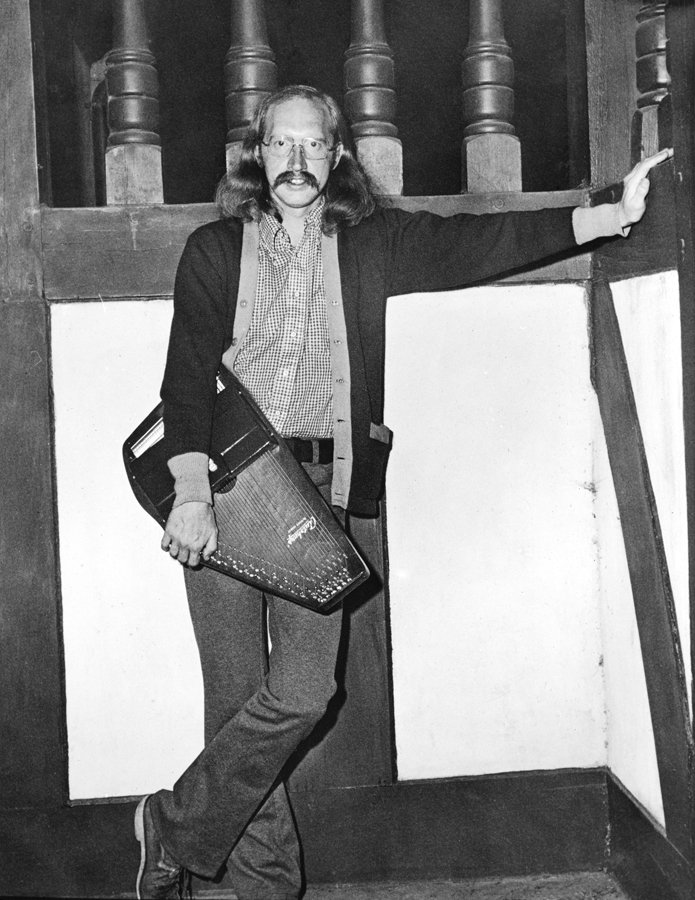
Your first three concert posters were designed in June of 1967 for Muddy Waters, The Youngbloods and the Jimi Hendrix Experience. How did you get hired to do that and were you nervous about it?
I was hanging the Matrix Youngbloods poster on Haight Street. I was approached by a group of Diggers that thought the poster was cool and asked if I would design one for the upcoming Jimi Hendrix Experience concert they were planning in the Panhandle. The Diggers ran a newsletter, the free store on Haight Street and gave away free food to the hungry at the Panhandle – at the intersection of Masonic – a block North of Haight Street. When they gave away the food, they often had bands playing on the back of flatbed trucks and powered by generators. I stayed up twenty four hours to draw the Hendrix poster and had it printed within two days. As I previously mentioned, I completed the artwork for the Muddy Waters poster three weeks earlier and sent the artwork to Kay Jackson in Dearborn, who arranged the printing. This was a full of activity, but I was full of youthful energy and enthusiasm and wanted to get involved in the local scene. Two months earlier, I had met poster artist Rick Griffin in Berkeley and he suggested that I approach the Matrix. Much later I would design posters for both the Fillmore and the Avalon Ballroom.

And I’m sure you attended the show as well?
Yes, I did. I had already heard the band’s song ‘Purple Haze’ on the radio and I immediately loved the group’s sound. That evening, I also attended the concert at the Fillmore with Jefferson Airplane and Gabor Szabo. I would eventually see the Jimi Hendrix Experience four more times, before Jimi died.
Tell us about playing with B.B. King at The Fillmore West in February of 1970. That must have been out of this world experience for a young man like you back then?
It was. Let me tell you the whole story. By this time, David Green returned from Japan and got his discharge from the Army. We shared a house with him. Joe and Jim were living near Ocean Beach and a rehearsal studio called “Funtier Town” that had once been an old cowboy town amusement that featured Wild West birthday parties and other events for SF children. It was eventually closed down by the owner who rented a few practice spaces to rock bands. We tried to reform Mercury Vapor and shared a space there, with a group we were friends with called Steel Wool. When their equipment was stolen, lead guitarist John Rosenstock decided to rent the whole complex, rename it Mushroom Studios and rent out spaces to other SF bands. It became a very successful venture for John. Anyway, near the office of the studios, there was a bulletin board with notices of bands looking for musicians and announcing upcoming events. One day David, Joe and I were reading some of the notices, when we found one that B.B. King wanted to jam with SF musicians on Saturday night of his upcoming concert series at the Fillmore West. The Fillmore West had been known as the Carousel Ballroom and was eventually run by the Grateful Dead and Jefferson. When that began to be too much trouble for those bands, Bill Graham stepped in and renamed it the Fillmore West.
Anyway, David loved the music of B.B. King and he often played guitar in B.B’s style. I said, “David, here is your chance to jam with B.B.” So, that evening Joe, David and I went to the concert. David brought along his Gibson SG guitar. B.B. played his regular set of songs and then announced that local musicians who wanted to jam should line up on the left and right of the stage. David began shaking and said that he couldn’t do it. I got a little mad at him and because I had three harmonicas (of different keys) in my pocket, I told David I would do it. I stood in line on stage left right behind Charlie Musslewhite. When Charlie finished he said. “Your next.” It took me a moment to hear myself coming out of one of the monitors as I vamped while B.B. played a guitar solo, eventually he nodded to me and I did a harmonica solo. Nobody booed, so I guess I did a pretty good job – ha!!! David was still shaking when I rejoined him and Joe – ha!!! I guess you could say that was the highlight of my musical career.
In 1980, I designed a poster for a B.B. King concert at Masonic Auditorium in Detroit. Five year later, I had the opportunity to interview him after a concert at the same venue. It had been arranged by my friend and concert photographer Frank Pettis. We were led into B.B. King’s backstage dressing room that was filled with B.B.King’s local friends and other well-wishers. At some point, B.B. asked everyone to quiet down and they would learn about his life and career as a blues musician. That was my signal to turn on my tape recorder and begin asking him questions. He told us so many great stories that everyone enjoyed themselves. It was with some irony that in the room was drummer Sonny Freeman who had retired and settled in Detroit. Sonny had been B.B. King’s drummer when he jammed with them in 1970. I mentioned this at the tail-end of my interview and Sonny jumped in and said, “I remember you.” I joked and said, “After so many years and concerts, how could you remember me?” Sonny said, “You were the only long-haired redhead and white harmonica player that ever played with us.” B.B. agreed and I found that remarkable.
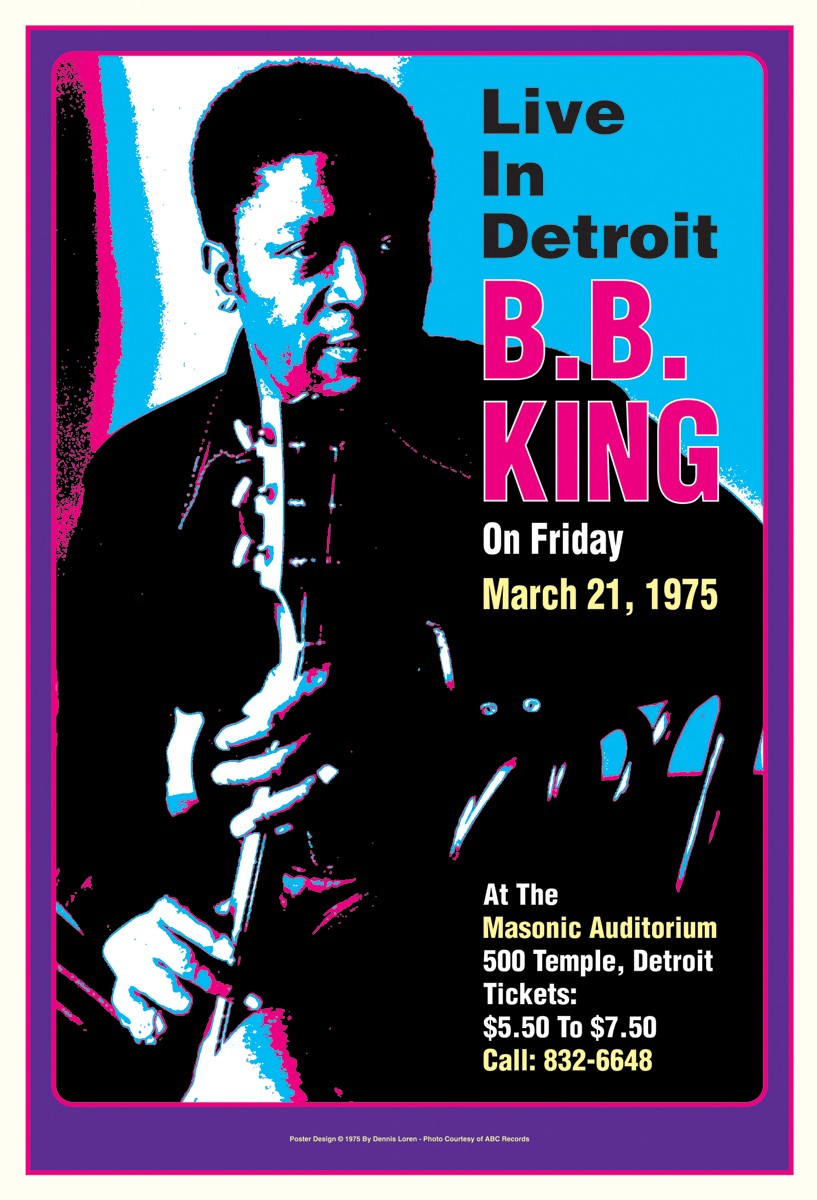
How come that you returned to Detroit in July 1970?
I was heartbroken that my marriage had ended. I took custody of our son Ben and thought it best to return to Detroit where I had a better infrastructure with family and friends. I felt this would be best for Benjamin. It didn’t take long for me to get involved in music and art here in Detroit. I certainly missed San Francisco and had the chance to relocate there in 2000, to work with my friend and artist Gary Grimshaw again.

What’s the story behind your song ‘Let Go’ that appeared on the ‘Stone Soup’ album?
As I mentioned above, I got involved in the local Detroit singer-songwriter scene and began performing solo at coffee houses, such as the Hinge, the Crystal Wind, the Hushpuppy, the Union Station, the Earth Center and Ark in Ann Arbor. I became friends with Mike Waddell, Aging Children (a trio featuring Leo Kretzner and Richard and Maureen Del Grosso.), Rick Rubarth and most of the folks that would later contribute a song to the Stone Soup compilation album. This album was recorded at Lifeline Studios in Detroit. My song ‘Let Go’ featured me on lead vocals and autoharp, Mike Waddell on acoustic guitar, Bill Long, studio co-owner and former member of the Tidal Waves that had a hit with their cover of the song ‘Farmer John’. Bill played harpsichord, twelve string guitar and drums. My friend Ted Lucas, of The Spike-Drivers, played lead guitar.

How did you know guitarist Ted Lucas (of The Spike-Drivers and a Motown session musician)?
I first met Ted, when Kay Jackson and I attended one of The Spike-Drivers concerts at the Raven Gallery in the mid-‘60s. The group’s drummer Larry Cruse had lived next door to my grandparent’s house when I was a child. That night Larry and I renewed our friendship and he introduced me to lead guitarist Ted Lucas. When I returned to Detroit, I often opened for many of Ted’s solo acoustic performances. I usually met with Ted, once a week to play new songs we had written, during the previous week and critique them. Sometimes wrote lyrics and played autoharp on some of his songs.
Ted was a studio musician for many Norman Whitfield productions at Motown. Ted was Norman’s special instrument musician of choice. Ted played guitar, sitar, bazooki and other stringed instruments, as well as harmonica. Ted recorded with the Supremes, the Temptations, Stevie Wonder and other Motown acts. He first introduced the wah-wah pedal to Motown, which at first Barry Gordy didn’t like, but would soon have funk brother Dennis Coffey use on a lot of Motown recordings. You can hear Ted playing harmonica on The Temptations’ song ‘Ball Of Confusion’ and trading wah-wah licks with Dennis Coffey on the Temps’ song ‘Psychedelic Shack’. Ted plays sitar on the song ‘Cloud Nine’ and several Supremes recordings.
And there were also Bill Long (of The Tidal Waves) and singer-songwriter Mike Waddell on the recording, right?
Yes, as I mentioned above, both Mike and Bill played on ‘Let Go’. I should also mention that they sang background vocals on the chorus. We double tracked eight harmony vocals on that song, including me. I jumped the gun once again – ha!!!
You worked with Stanley Mouse on the Ted Lucas solo album cover design. Tell us about Mouse and Lucas? What were they like?
Both Ted and Stanley Mouse had been friends before Mouse moved to San Francisco and began designing posters and album covers (with his design partner Alton Kelley) for SF bands, such as The Grateful Dead, Big Brother, Journey and many other groups, Stanley and Alton also worked separately and as a team, depending on the project. One was left handed and the other was right handed and they could both work together on covers such as the Steve Miller Band’s album ‘Book Of Dreams’. They also began a t-shirt business called the Monster Company.
Often Stanley Mouse would return to Detroit to visit his parents, who ran two locations of the family business called the Mouse House. These were essentially head shops that also sold posters and t-shirts by Mouse and Kelley. When he was in town, he would set up at both of Mouse’s house locations at different times and airbrush hot rod monster t-shirts for customers. Stanley airbrushed a shirt for my son Ben that he wouldn’t take off for a whole week – ha!!!
As I mentioned previously, Stanley, Ted and Jim Gurley all knew each other since the early ‘60s. Back when Jim played in Detroit with the Ekliff Brothers band and practiced Django Reinhart licks in his apartment near Wayne State University. Mouse had even drawn postcards for Ted Lucas when he still taught guitar lessons. Stanley’s first album cover was done for Motown for a Smokey Robinson’s album called ‘Mickey’s Monkey’. He airbrushed a design on the back of a pizza box lid and was paid the princely sum of thirty-five dollars.
One day Ted called me and said that Stanley Mouse was in town and that I should come over for a planning discussion for Ted’s solo album cover. Stanley is a very quiet person that doesn’t talk very much, but he continued to sketch ideas during this session. He showed us what eventually looked like the cover he designed for Robert Hunter’s solo album ‘Tiger Rose’. He eventually sent us artwork of the winged scarab design that you see on Ted LP cover. I had seen this design before. When Mouse had an exhibit at the Detroit Institute of Arts museum. It had been part of collaborative design with Alton Kelley for a planned Jimi Hendrix LP cover for an album called something like ‘First Rays Of The New Rising Sun’. The design was never used because Jimi Hendrix died. The design had Stanley’s scarab in the center, which was surrounded by a symmetrical collage by Alton Kelley that included a woman on top of a brontosaurus dinosaur, with lightning bolts emanating from a mask the woman was wearing. It was a stunning piece of artwork that I still have fond memories of.
Stanley lifted the winged scarab and pyramid design from the Jimi Hendrix design and did new hand lettering. I designed the back cover and put the final mechanical together for printing. I also designed the lyric sheet with illustrations by long time Stanley Mouse friend Richard Ash. In recent years – after Ted passed away in the early ‘90s – the album has been reissued several times and I also designed a CD version of the album and wrote the liner notes for the CD booklet.
In the mid 70s you worked as a layout artist at the Detroit Sun entertainment weekly newspaper with Gary Grimshaw, John and Leni Sinclair.
When I returned to Detroit after being stationed in Sinop, Turkey and before I went to San Francisco, my brother David and I attended a couple of concerts at the Grande Ballroom. This is where I first saw a few of Gary Grimshaw’s poster designs. His work became an immediate influence on me, before I ever saw any San Francisco concert posters. His hand lettering and design symmetry was excellent. I finally got to work with Gary as part of the art staff at the Detroit Sun. Of course John Sinclair had been the manager of the MC5. John had been jailed for giving an undercover policeman a marijuana joint. Eventually, a benefit concert was organized that featured John Lennon and Yoko Ono, Stevie Wonder and a host of Detroit bands. Soon after this huge concert John was released. John’s then wife Leni Sinclair is a well-known music photographer. Her work can be seen in the book she collaborated with Gary Gimshaw called “Detroit Rocks” (which shows Leni’s concert photographs juxtaposed with Gary’s concert posters) and her recent book of photos called “Motor City Underground”.
After his release from prison, John organized the annual Blues & Jazz Festival in Ann Arbor with his concert promotion partner Pete Andrews. John also became involved with the Strata Record label and wrote liner notes for albums featuring the music of the Lyman Woodard Organization, Ron English, Larry Nozaro and other Detroit jazz musicians. Leni often took the photos for these albums. During the ‘80s John started a music booking and management service with former Up lead singer Frank Bach and Gary Grimshaw. John would eventually record his blues and jazz history poems with the Blues Scholars band. I was at one recording session in Los Angeles that featured guitarist MC5 lead guitarist Wayne Kramer.
I continued to work with Gary Grimshaw on many projects and music publications over the years in both Detroit and San Francisco, until his passing in the Spring of 2014.
What about your work for fanzine Ballroom Blitz (later simply called Blitz!) for Editor Mike McDowell?
I had seen copies of Greg Shaw’s music fanzine Bomp!Mike McDowell and a friend had started a type written newsletter type fanzine called Ballroom Blitz! I thought Mike might consider turning it into a more professional looking local Detroit music magazine. I kept running into him at Detroit area record stores and collector’s conventions. Eventually, I thought seriously about the idea and contacted me to do the graphic design and layout. Occasionally. I would write a regular column on Detroit’s growing punk and new wave scene. Blitz! I continued to work on Blitz! Until Mike McDowell moved to Los Angeles.

This eventually led to you becoming the art director for Goldmine magazine in 1978.
Yes, I worked as art director for Goldmine for the next five years and when it became a huge success, Brian sold the tabloid journal to Krause Publications in the State of Wisconsin. Krause published an array of hobby magazines for collectors of everything from stamps and comic books to paper collectables and cars, and everything in between. Because Goldmine had become a huge two hundred and eighty page publication, Krause decided to publish it bi-monthly, knowing that dealers and collectors could not afford to advertise in each issue. This naturally slimmed down the page count. The only Goldmine employees the new company kept were advertising director John Koenig and editor Jeff Tamarkin.

Around that time you started working pretty much non-stop as a designer for flyers, album covers et cetera. What are some that you would like to highlight?
Before and while I was still working full time at Goldmine, I started designing picture sleeves for the local punk and new wave DIY recording scene. I literally designed hundreds of flyers, posters and picture sleeves for bands, such as The Mutants, The Romantics, Flirt, Cinecyde, The Reruns, Destroy All Monsters, Natasha, Service and The Ivories. I designed several compilation album covers (some with Paul Zimmerman and Gary Grimshaw) for the Tremor Record label. While at Goldmine I also began designing album covers for Westbound Records and the company’s subsidiary labels, Eastbound, Nine and the Sound Of Gospel. I worked at Westbound full time, between the sale of Goldmine and being hired to work on the art staff of Creem magazine.
You also worked for Creem?
Yes, one day Gary Grimshaw called me and said there was an opening on Creem Magazine’s art staff. Gary worked at Creem, off and on over the years and was currently working on special issues. Creem actually published six music magazines a month that included Metal, Rock Shots, Black Sounds, Thrash Metal and Creem Presents special issues. When I joined the Creem art staff, the company had been recently purchased by Arnold Levitt of Cambray Publications in New York City. Arnold teamed up with Gary and I to design and layout the Creem Presents special issues and one of his sports magazines called Ohio Football. When we finished those publications we would help work on other monthly titles.
Do you have any problems when you have to adjust your style to the style of music or is that something that goes spontaneously with you?
No, I have never had a problem with that. In fact, I always tried my best to give a band, label or magazine a style of its own or work within an existing style. I have worked on projects for all styles of music, including surf music, jazz, country and rap.
You moved back to California around that time?
Yes, in 1987, Arnold Levitt decided to limit his holding to Los Angeles and New York City. After buying the Creem family of magazines, he was constantly flying between New York City, Detroit and Los Angeles, so he decided to consolidate and move the Creem staff to LA. Or should I say part of the staff – ha!!! He only moved editors John Kordosh, Bill Holdship and Dave DeMatino and Creem art staff Cheryl Klopshinski, Pam Frankhauser and I. He wanted to keep Gary Grimshaw, but Gary decided to go to work for Art Rock – a poster publisher – in Ann Arbor that soon moved to San Francisco. In LA we soon hired assistant editors Steve Peters, Dave Sprage and Vioki Arkoff, as well as typesetter Steve Zdroik for the art department. We picked up graphic freelancers to help with tight printing deadlines, such as former Detroiter Janet Cole and James Stagnitta. Cheryl became art director of Creem and Rock Shots. I became art director of Metal, Thrash Metal, and BlackSounds.
When Cheryl moved to Nashville to join her boyfriend, Pam moved into her job. We hired a new typesetter and Steve and Janet Cole helped me layout my group of monthly titles. When Arnold sold his publishing company to another publisher in New York City, Pam left to work for an ad agency and I became art director of Creem. When the new publisher defaulted on the sale only Steve Peters and I remained on the staff. Steve got freelance writing help from John Kordosh and Bill Holdship and I got typesetting help from Steve Zdroik and freelance layout help from Pam and her husband Bill Frankhauser and occasional help from James Stagnitta. At this point Arnold only published Creem, Metal and Thrash Metal monthly titles.
It should be remembered that Arnold Levitt had been the head accountant for Marvel Comics and then was headhunted by Larry Flynt Publications, who published twenty monthly magazines. James Stagnitta knew Arnold when he was art director for Larry Flint’s Hustler magazine. Previously James had been art director of Crawdaddy magazine and then Intellectual Digest. When Arnold sold Creem to a local Los Angeles publisher. I began working freelance as a designer for record companies, such as Rhino, Bomp!/Alive, Del-Fi, Vanguard, Capitol, Bellmark and Polygram and occasionally at Flint Publications.
One of the highlights must have been your collaboration with fellow graphic designer Mark London on the CD and LP packaging for Brian Wilson’s 2004 album ‘SMILE’.
Mark was a friend that used to hang out at my studio apartment and helped me out on a few projects. Mark considers me his mentor. When he saw that Brian Wilson was scheduled to perform a comeback concert at LA’s Wilshire Theater, he contacted Brian’s management and asked to design the concert poster. Soon, Mark became Brian’s in-house graphic designer when Brian started touring again. The first Brian Wilson related project Mark asked me to help him with was for the “Pet Sounds” tour. We worked on the tour book and some of the tour merchandise. In 2003, I was asked to work on the CD and LP packaging for ‘Smile’. Mark’s basic design was complicated in that it involved three styles of printing. Embossing, foil stamping and normal CMYK printing. It needed vector outline work and that was my area of expertise. I think the highlight of my career was listening to the final mix of ‘Smile’ in Brian’s home music room, with Brian, his wife Melinda and Mark. We also worked on the tour book and loads of tour merchandise. Even after I returned to Detroit in July of 2013, I was asked to ink and vector the Beach Boys 50th Anniversary logo that needed to be foil stamped in gold on the CD and LP album.

In 2012 you worked on a poster book with Mick Farren. Would you like to tell how you approached organizing the book?
I had previously worked on two books packaged by Elephant Books in London, England called “The Beats” and “The Art Of British Rock”. In 2011, Elephant Books head Will Steeds contacted me to collaborate with Mick Farren by writing the text and gathering poster images from artists, venues and labels from around the world. The book was entitled “Classic Rock Posters” and sub-titled “From 1952 to 2012”. I was still living in the San Francisco bay area. The internet was invaluable to making this work possible. Of course I knew most of the American poster artists and a few of the English poster artists. Mick Farren wasn’t well at the time, so I carried most of the load.
I worked feverishly for most of 2011 on the book until the printing deadline in early 2012. Several English music journalists helped to complete the captions. Mick Farren unfortunately died a few months after the English edition was published by Omnibus Books for the UK (including Canada and Australia). The book was published in the US by Sterling’s Metro Books imprint. Editions were also published by various book publishers in Germany, France and Italy. The book also was published three times in America. The Italian version was expanded to include chapters on Italian poster artists. You can still purchase copies of the book on Amazon.
How would you describe your style?
I am not completely sure – ha!!! Over the years, I have absorbed many styles and graphic design techniques. I put them all into the mixer in my head and what comes out is magic. I still think my strongest ability is with color. It is really difficult to answer this question, because I can’t really be objective – ha!!!
What’s the typical creation process like? Do you work on various things or do you focus on just one particular project at a time?
Ironically, I am usually busy with multiple projects, yet I can only concentrate on one project at a time. Occasionally, I lose sleep when approval and printing deadlines become closer and closer. I have probably carved years off my life from doing “all-nighters – ha!!! When it comes to actually designing a project, I first stare at a blank sheet of illustration board or the blank computer screen. It is a bit like meditation. Soon I begin to visualize ideas and then I immediately begin to draw certain elements. Fortunately, most of my clients trust me and go along with my idea. I rarely have been asked to make serious changes to a design. My friend and business partner Kent Wood at Blue Moon posters in Concord, California says, “You have hit it out of the ballpark, again Dennis.” I trust his judgment. In the pre-computer days, I used to provide record label art directors with these marker comps or ideas. The one that looked the most complete design would be the one they would choose. I feel that no idea is bad and often I reuse those ideas on future projects.
What currently occupies your life?
I continue to work on my craft. Over the last few months, I have designed two gatefold LP covers for double Roky Erickson & The Explosives live albums entitled ‘Halloween (Recorded Live 1979-81)’ and ‘Halloween II: Live 2007’. This last album is a near perfect live recording made at the Bowery Ballroom in New York City, during one of Roky Erickson’s more recent comeback tours. I have designed a 45 rpm picture sleeve for Detroit band The Denizens and a poster for the grand opening of the Michigan Rock & Roll Legends Hall Of Fame museum. I went to the opening last Saturday, March 12th, 2022. They have an exhibit of my concert posters and I will give a talk there in May. I designed a “download” cover for a Moonalice single and will be designing a concert poster for Moonalice’s April 22nd “gathering of the tribe” annual 420 concert.
If you and your readers don’t know, Moonalice is a super group of San Francisco musicians, that features Pete Sears from Jefferson Starship on bass and vocals, drummer John Molo from Bruce Hornsby & The Range, Lead guitarist Barry Sless from Phil Lesh & Friends and a more recent version of the New Riders Of The Purple Sage, rhythm guitarist and vocalist Roger McNamee from the Engineers and the Flying Other Brothers. The most recent additions to the band are Lester Chambers from the Chambers Brothers and his son Dylan on vocals, harmonica and cowbell, a vocal trio called the T Sisters and Jason Crosby on keyboards and fiddle from the Doobie Decibel System and his own band. It is a stunning line-up. Their new CD album will be released at the 420 concert at the Great American Music Hall in San Francisco. This concert always kicks off Moonalice’s touring season. They are more than ready after two years of the pandemic – ha!!!
Moonalice uses about twenty poster artists in rotation, including Stanley Mouse, David Singer, Lee Conklin, art directors Chris Shaw &Alexandra Fischer, Carolyn Ferris, John Seabury, Darren Brenner, Greg Gordon and until his recent death, Wes Wilson, the father of psychedelic posters. They even used unpublished art by Rick Griffin for a poster. Moonalice prints a poster for each concert and gives them away to the audience after the concert. Later they sell the posters on the dedicated web site named www.moonaliceposters.com. They share the internet sales of each poster with the artist that designed them. I have created well over 50 posters for Moonalice, the Doobie Decibel System and Roger McNamee solo concerts. Moonalice is one of the best clients I have, along with SteadyBoy Records in Austin, Texas.

Thank you. Last word is yours.
Well thank you and It’s Psychedelic Baby! Magazine for asking for this interview. I hope that I was not too long winded with my answers, but details are important and context is everything, in my opinion – ha!!!I hope that all of you and all of your readers enjoy this interview. In closing I would like to mention that I was fortunate to design posters for more a recent generation of Detroit bands, such as The White Stripes, The Go, The Dirtbombs, The Soledad Brothers, The Von Bondies, Blanche, The Detroit Cobras, Wax Wings, The Greenhornes, Brendon Benson and others.
I returned to Michigan in July of 2014 to care for my late parent’s home in Dearborn (ten miles West of Detroit). My son Benjamin and my daughter-in-law Cyndie live in North Bend, Washington (twenty five miles West of Seattle). Ben is a computer programmer and Cyndie works for a humanitarian foundation. I turned 75 in June of 2021. They say, “You can never go home again,” but my current studio is the old bedroom that I shared with my brother David. I continue to work on my music related book of illustration & graphic design called “Finger Prints”. Wish me luck because it keeps growing in pages – ha!!!
Klemen Breznikar
Dennis Loren Official Website / Facebook

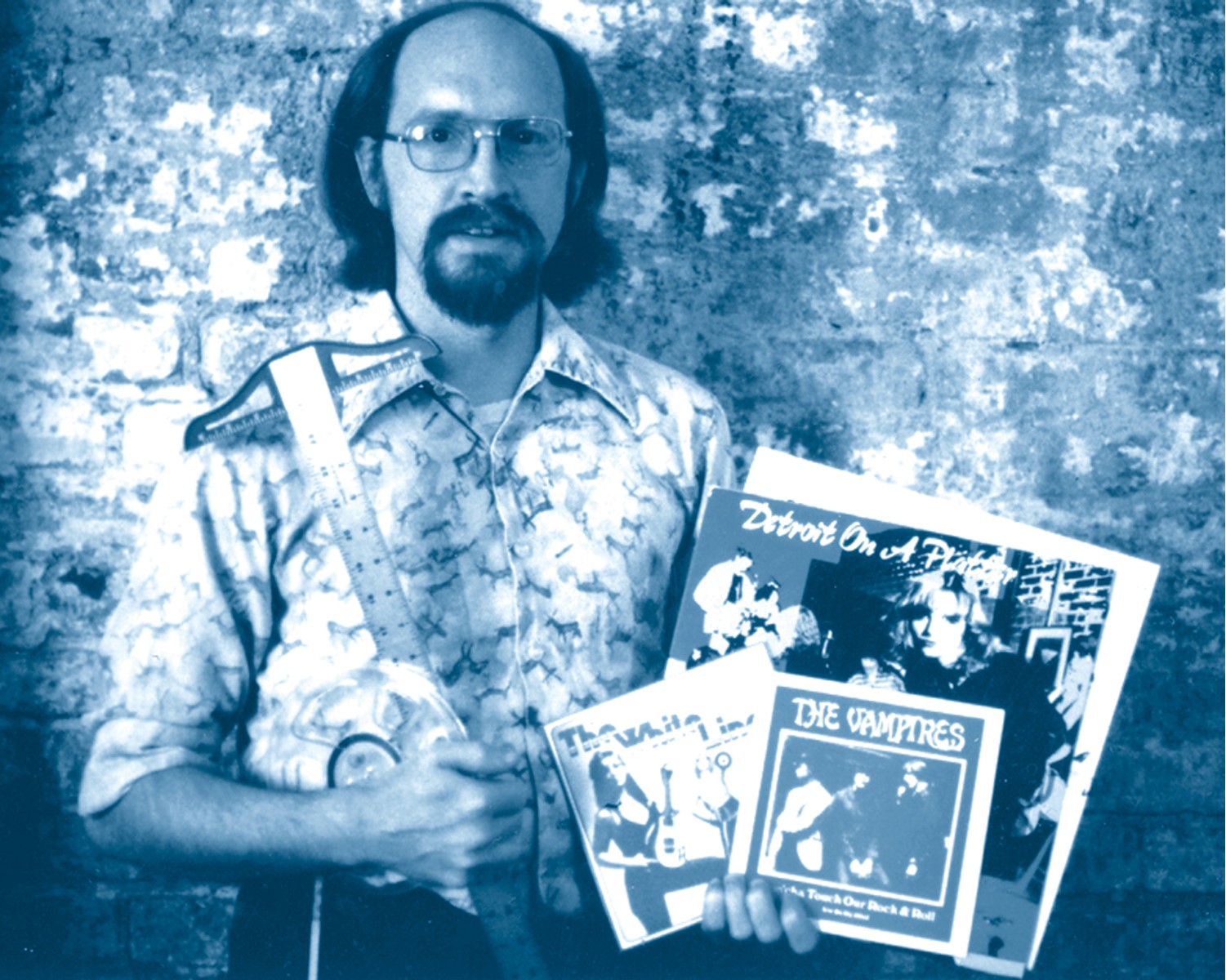

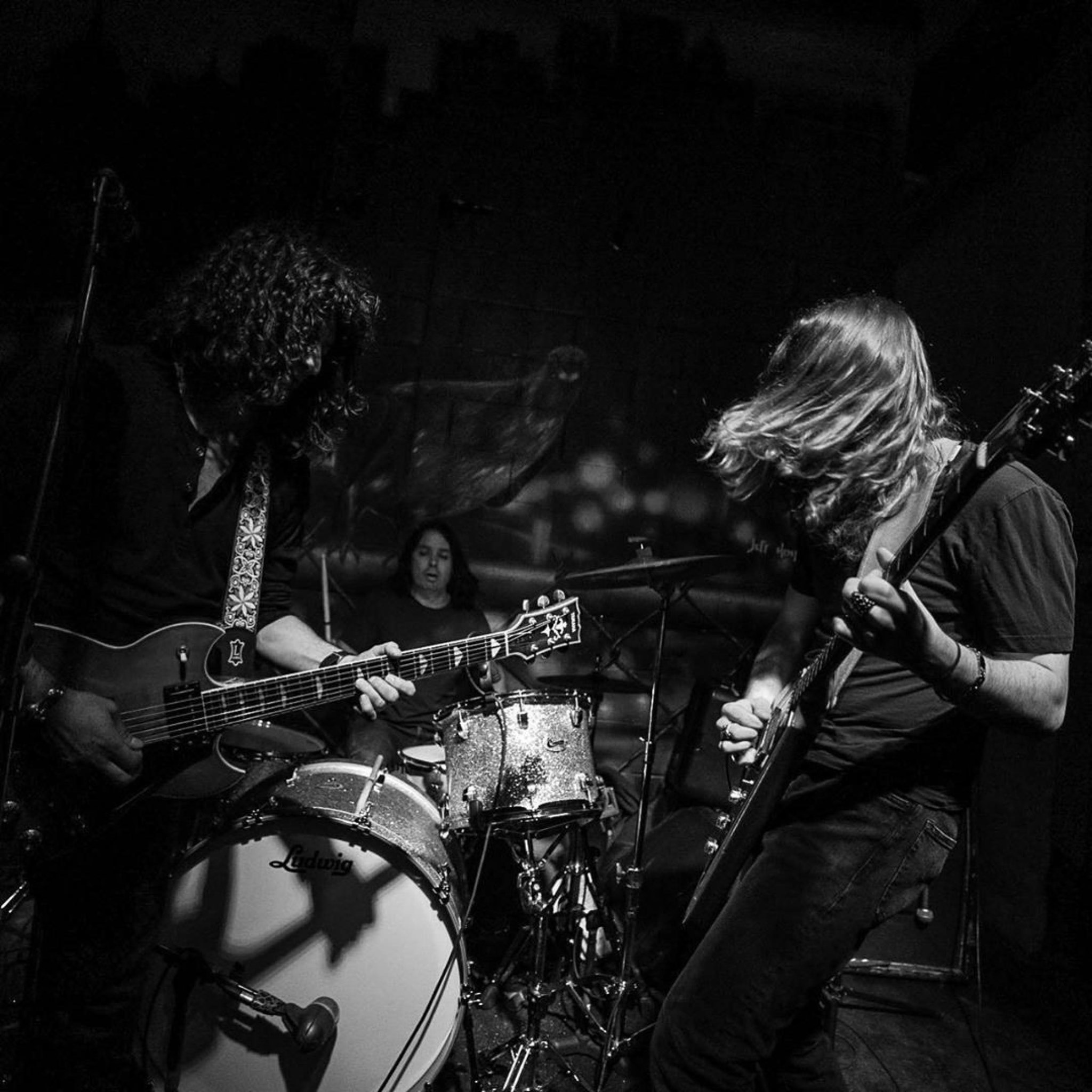
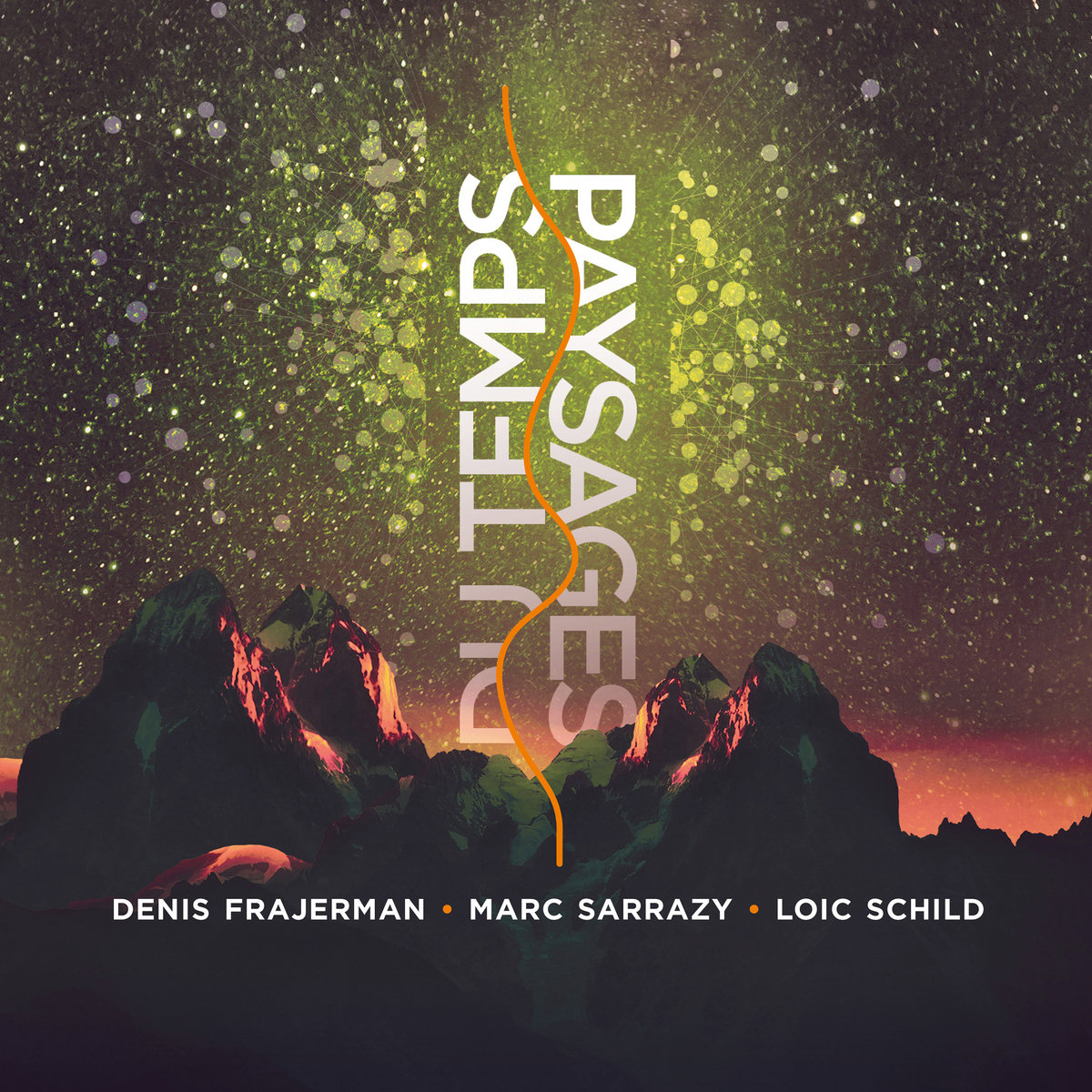
Thank you Klemen for this great great interview. Very intetesting for me especially because of the S. F. scene. By the way Paul Kantner also once said in an interview that the summer of love was not 67 but 66. That’s only incidenfully. Of course i know most of the players in the bands mentioned her or other people. Also very likeable is D. Loren ! Who not only lives in the past. He lists many excellent new Detroit bands for the present, of which i don’t know all but quite a few. Very nicely done also with the many photos. Thank you !